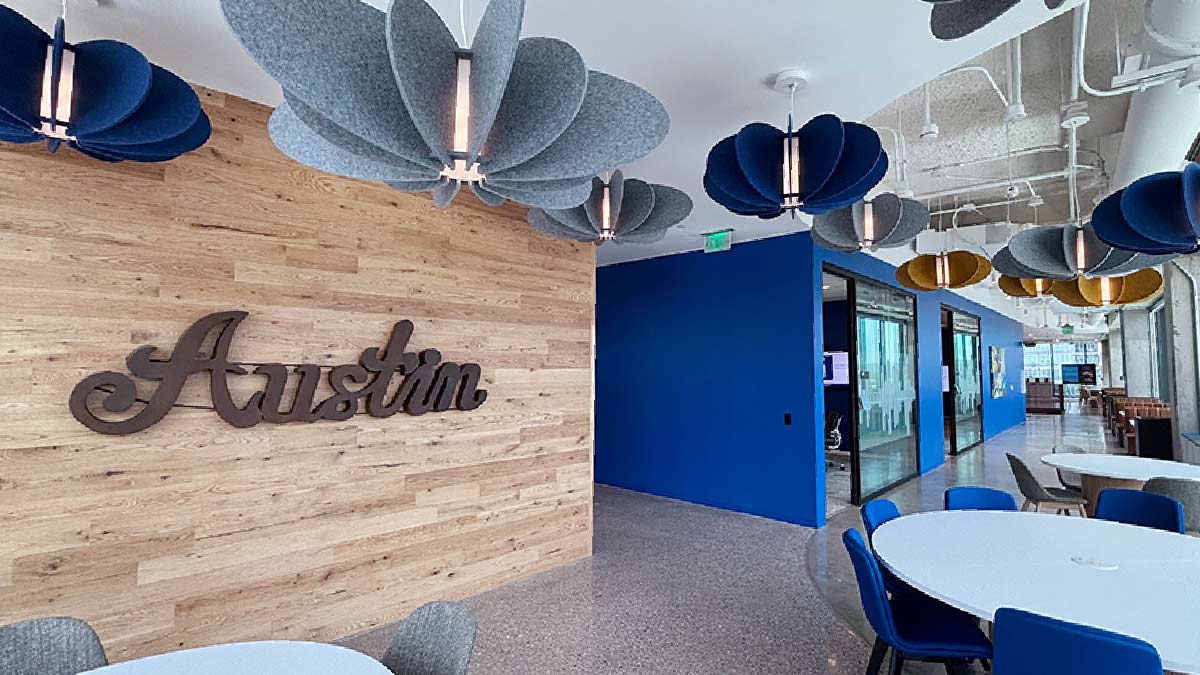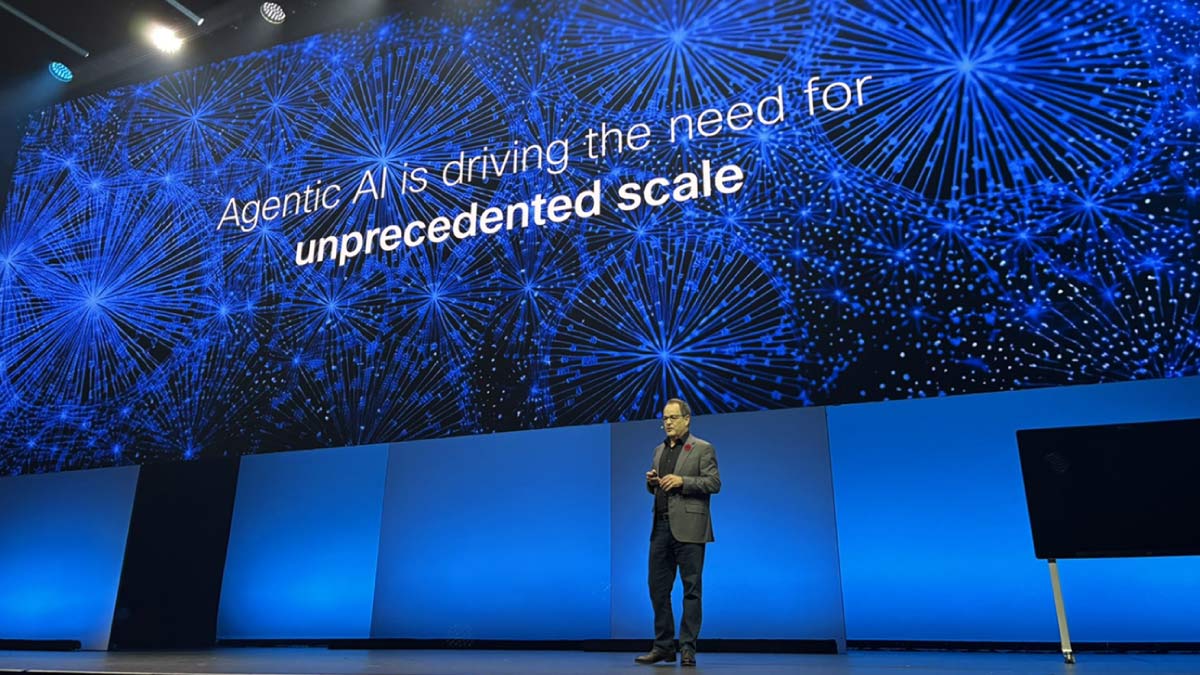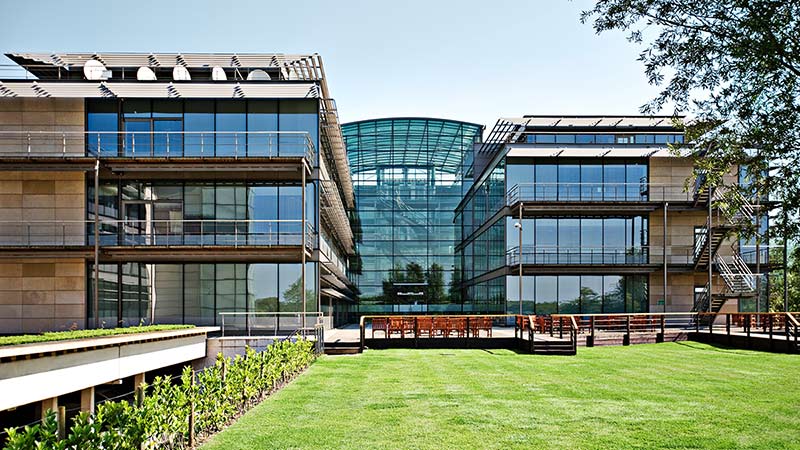The hybrid work revolution is one of the most profound tech trends reshaping our world. It promises to bring tremendous flexibility to people’s lives, unleash new forms of creative collaboration, and sow new opportunities in overlooked regions of the world.
But to fully realize the vast potential of hybrid work, organizations will need to focus on updating the enterprise campus, as well as the remote experience. As people return to the office, there will be new demand for rich video applications such as AR, VR, and 8K. And the foundation for that experience is a secure, agile, future-proof network — one that supports a heighened hybrid-work experience, whether done remotely or from the office.
Greg Dorai, VP for Cisco’s secure-access product portfolio, shared his thoughts on how Cisco’s latest innovations are powering this next wave of work.
Q. Thank you, Greg! What are some of the challenges that organizations face today in making hybrid work from the enterprise campus the best experience it can be?
A. The first challenge is simply defining what your version of hybrid work will be. There’s no universal standard. So, every organization has to define what it means for them. It’s less about the technology per se. And more about the actual experience that you want to provide your employees. And when you focus on that, you will determine for yourself the technology network infrastructure that you need.
But a big difference from before the pandemic is that the remote worker will no longer be a minority. Previously, if you were a remote worker, you could feel left out. But the interaction between the in-person and remote worker is going to be super important. I think that video collaboration is going to have to continue to change, to make both the remote and in-office experience even better. And organizations will have to figure out how to keep that in-person environment rich enough that people want to come to the office, even if, for some, it’s once or twice a week, or even once a quarter. So, there’s going to be higher standards for an in-person environment and a remote experience, neither of which will be like what we left in 2019.
Q. How is Cisco enabling organizations to meet these challenges?
A. Clearly, we have our answer with Cisco Webex and the other innovative collaboration tools that we build. But beneath that it’s the network infrastructure that really counts. Organizations will need infrastructure to handle that level of rich video traffic, which will come from the advent of AR, VR, and 8K applications, some of which are still to be developed. So that whether people are in the office or at home, there’s rich collaboration.
That means organizations have to think now about where high-density video will go in this next decade. And what kind of a network will be required to support it and enable the best experience. Many organizations will need to rapidly scale to meet this need. That’s what Cisco offers. We can help businesses rapidly scale their networks and digitize their operations. And we enable and secure all the connections needed for hybrid work in the enterprise campus.
Q. What are some of Cisco’s latest solutions?
A. We have two important launches in February, both of which will redefine the enterprise campus experience in a big way. One is our next-generation WiFi 6E capability, along with the refresh of our Catylst 9000 switches. These two together will enable multiple-gig speeds that will make the 8k video experience flawless. And with WiFi 6E, customers are going to get wired-like experience with wireless, with capacity and speeds bumping up significantly. But you will also have full-stack observability, to fully onboard, maintain, and troubleshoot the network, even in an environment where IT may be remote.
And with Catalyst 9000X UPOE switches and Cisco DNA Center, we can address a whole range of use cases in the physical workspace, using IoT and other devices. That includes monitoring energy efficiency, health and environmental concerns, meeting-room capacity, navigating the buildings, booking conference rooms, and so on. And doing it all securely.
All this together creates the smart workplace. It’s a set of use cases in which we get data from Webex devices, we get data from Meraki cameras, we get data from WIFi access points, and from environmental sensors. This plethora of data that feeds Cisco DNA Spaces and third-party applications make the experience very rich.
Q. Security is a cornerstone of hybrid work and IoT. How is Cisco ensuring it?
A. When you digitize and have a lot of connected things — sensors, cameras, etc. — you can be vulnerable to attack. Especially if your security was designed before you digitized. But we embed security in the network to enable the most compelling hybrid work use cases. Among the things we have created is a trust score in Cisco DNA Center. We evaluate all devices continuously, and we monitor the type of traffic and type of application services that are being used. If we detect an anomaly, like if a camera is spoofed and it’s sending data to an unfamiliar place, the system will give it a low trust score. So, you can take action right away.
Q. Cisco Silicon One has become the premier silicon architecture for web scale and service provider networks. Now it’s included in the Catalyst switching family. What benefits does Silicon One bring to enterprise networks?
A. For the first time, we are bringing Silicon One and 400-gig capabilities into enterprise use cases. That represents a huge jump in capabilities. At the same time, we fit it into a smaller form factor for campus and branches and do it with much lower power demands. So, we’re offering the speed and deep buffering that Silicon One provides, while also helping organizations to meet their sustainability goals.
Q. Cisco’s core purpose is to power an inclusive future for all. How do these latest innovations support that wider purpose?
A. If we get it right, hybrid work – whether done in-person, on-campus, or remotely from a home office, coffee shop, or really anwhere else – is going to open incredible talent and leadership potential and opportunities. People who have been shut out from the workplace for health reasons, geography, and so on will be included. And I actually think that you can be a more effective leader if your company invests in the technologies that create a great, immersive experience.
It’s real. And I think we’re going to see a very inclusive future, with much more diversity in the workspace, regardless of the vertical. With digitization, language and culture barriers will unravel. And the flexibility around how and from where we choose to work will be huge.
Q. What do you see for the future of hybrid work?
A. It will be an unbelievable advantage for corporations that are bold enough to invest in the 360-degree hybrid experience for all employees wherever they choose to work and allow their cultures to change and evolve. Because to get a truly inclusive workforce, you have to have both. You need a culture of flexibility to fully enjoy the experience the technology enables.
I think it’s going to be great for Cisco and for our customers and partners. With these latest innovations we can help them to deliver great employee experiences, create smart, sustainable, safe workplaces, and deploy secure IoT at scale across the new enterprise campus. It’s exciting, because we can all work together at the center of this revolution called hybrid work.
###
Related content:
- Cisco Wireless CTO chats CES trends and the future of next-gen technology
- Hybrid work in 2022: A look ahead from Cisco customers




